Learn about spices commonly used in holiday dishes, including the spices that make up pumpkin pie spice. Our Dietician Carol Valle discusses their health benefits, flavor and history. Watch the video or read the transcript below.
Subscribe to our Wellness YouTube channel.
Hi, everybody. This is Carol, the dietitian, and this month we’re going to be talking about holiday spices.
Fall and winter are when spices tend to play a predominant role in our holiday cooking. The traditional holiday dishes call for, what are known as, the warmer spices, such as cinnamon, nutmeg, cloves, pepper and allspice. We’re going to be talking about some of these spices and some of their health benefits, but more about the flavor and history of the spices.
The top selling spice in the world is pepper. It’s called the “King of Spices.” The definition of a spice is any dried part of a plant other than the leaves. Spices come from plants, but not the leaves. They can include any other dried part of the plant if it’s used for seasoning and flavoring but is not the dish’s main ingredient. Leaves are considered herbs and can either be fresh or dried when used in cooking.
Thyme, sage, basil and oregano are all herbs; they’re all leaves of a plant. On the other hand, cinnamon is actually the bark of the cinnamon tree. Cardamom, which is another winter spice, is a seed pod. We’ll talk about all these more in detail. Allspice is actually a dried berry. Cloves are dried flower buds, and ginger is actually a root, which can be dried, fresh or crystalized. So, spices can be bark, roots, twigs, berries or seeds, but they all come from plants.
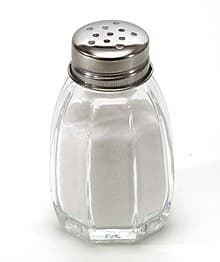
All countries grow, produce and use spices, and India is the largest producer, consumer and exporter of spices in the entire world. They’ve been used throughout history in cuisine. Obviously, we cook with spices.
They are used for preservation, and I recently learned ancient Egyptians used cinnamon to help embalm bodies and make them smell better during the mummification process. I’m assuming a lot would be needed.
There’s a growing field of research regarding spices and our health and prevention of diseases or chronic conditions. Many spices possess antioxidant, anti-inflammatory and anti-carcinogenic properties. Other spices are shown to be promising and help lowering blood cholesterol or blood glucose. The benefits of using spices appear to occur over time with consistent use, as well as a well-balanced diet, as opposed to supplements or pills. They are not going to give you a miraculous benefit by consuming large amounts. The effects of spices are noticed over a period of time as you include them in your diet. It’s not well studied yet, and there are no strong recommendations or research to support buying spices just to ingest, rather we recommend including spices in your diet.
We’re going to go over a couple different spices that I thought were interesting, and that you typically use this time of year.
Cinnamon
Cinnamon comes in cinnamon sticks or ground cinnamon. It’s probably one of the most common spices, which comes from the bark of a cinnamon tree. It’s used in cuisines throughout the world.
Cinnamon has been studied for its antioxidant and anti-inflammatory power. In the most promising studies, it seems to help lower blood sugar levels in people who have diabetes or hyperglycemia, as long as it is in conjunction with following a diabetic diet and taking diabetic medications as prescribed. If you have elevated blood sugars, taking a cinnamon pill every day is not, alone, going to lower your blood sugars, unless you’re also following a consistent diet and taking any medications your physician may prescribe. In addition, cinnamon adds sweetness to your foods without adding sugar. It’s a nice addition to things like hot cereal in the morning or fruit or yogurt.
Cinnamon is part of the famous pumpkin pie spice that you see everywhere this time of year. It’s one of the four spices included in pumpkin pie spice, and it helps you from having to measure out a quarter teaspoon of this and an eighth a teaspoon of that. Four spices are combined in pumpkin pie spice, with cinnamon being the predominant one. In Mexico, they often add cinnamon to their hot chocolate along with a little bit of vanilla and a dash of pepper to make a special Mexican hot cocoa. You can also add cinnamon to things like eggnog, stews and chilies. The uses of cinnamon are endless.
Allspice
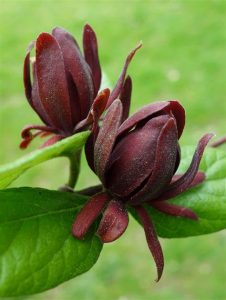
Ginger
Ginger is third spice in pumpkin pie spice, and is a root from a flowering plant. It can be used fresh, ground or pickled. For anybody who eats sushi, it will usually be served with pickled ginger on the side, powdered or crystallized. Ginger can help with nausea, motion sickness and indigestion. It’s very common in Asian and Indian cuisines, and it’s used in baked goods, meat, seafood, vegetable dishes and sushi. Gingerbread gets the its name from the ginger that’s used in it. It’s also used in beverages like ginger ale, ginger beer and ginger tea.
Nutmeg
The fourth spice in pumpkin pie spice is nutmeg. Nutmeg is a seed that grows on a tropical evergreen tree. It has a very pungent fragrance that’s kind of sweet, and it was used as incense by the Romans. Nutmeg is made from grinding up the seed into a powder. It is used in a lot of baked goods. You will also see it in fruit desserts, honey cakes and eggnog.
There’s another spice that comes from the same tree, which is mace. When nutmeg is first harvested, there’s a covering over the seed. Mace is the seed covering that surrounds the nutmeg. When it’s cracked and ground, it produces mace. You can either grate it or buy it ground.
Cloves
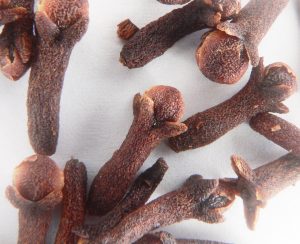
Anise

Cardamom
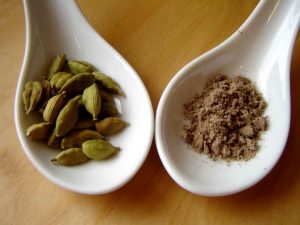
Peppercorns

Vanilla
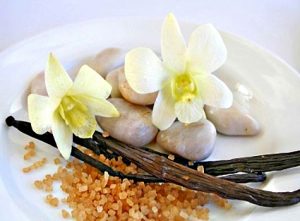
Storing and Buying Tips
The best way to store your spices is in a cool dry area away from heat and light. Storing your spices on top of the stove is not a great idea. Store them in a cabinet where they can stay cool and in the dark. Whole spices are the best if you can get those and grind them yourself. Spices are also available already ground. Every single flavor that’s out there also comes ground.
Buy your spices in as small of amounts as possible. I used to buy big containers of spice and have gone down to the smaller containers. You typically never make it through a whole container before you throw it out and freshen it up all over again.
There are several CLV events that will feature these spices, including:
• Dec. 16: Virtual Tea
• Dec. 17: Hot Cocoa Bar
• Dec. 23: Cookies with the History of St. Nick.
• Dec. 24: Eggnog day
Instant Chia Tea Recipe
I’m going to create an instant chai tea recipe you can make in your home. It’s an instant mix. All you have to do, when you’re ready for a cup of hot tea, is just add hot water, a little bit of warm milk for a nice cup of spice tea.
I want to end by wishing all of you a very happy and healthy holiday, and I am really looking forward to a much better brighter New Year. Thanks!
